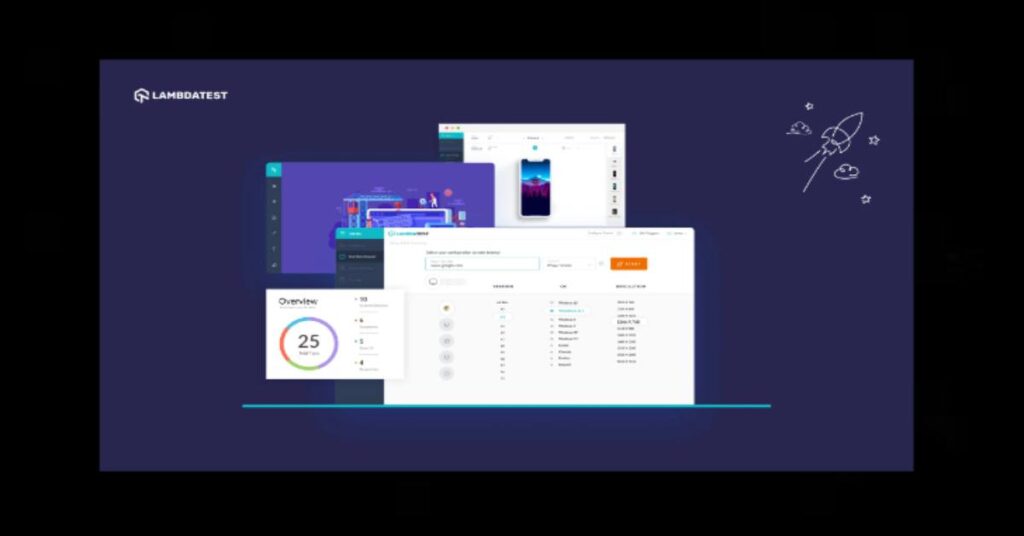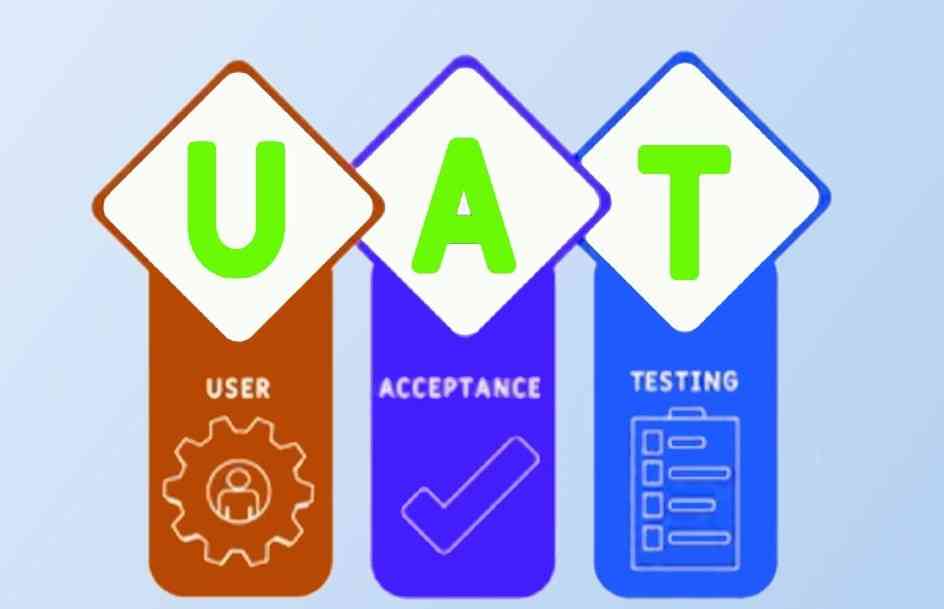Last updated on March 29th, 2024 at 01:03 am
Before starting this article on how to test OTT apps on real device cloud, let’s see how the OTT apps boomed the software industry.
The global COVID-19 pandemic has instigated a wave of transformations in the media and entertainment industries, driven by the necessity for individuals to stay indoors. Within the confines of their homes, people have turned to their preferred OTT apps for consuming media content. This shift is substantiated by the substantial surge in revenue and subscriber rates within the OTT media industry, and thus the testing of the OTT apps on real devices cloud is also gaining ground.
As the OTT media sector continues its expansion, there is a growing interest in enhancing the viewing experience. With movie theaters and live shows temporarily closed, the availability of content across various platforms has widened. Additionally, new devices have entered the market, bringing OTT content to viewers’ fingertips.
Streaming content on mobile devices has become increasingly convenient due to its portability, making it the preferred platform for binge-watching on OTT apps.
Table of Contents
What is OTT testing?
OTT testing encompasses the assessment of a platform’s capacity to deliver video and audio content over the Internet, encompassing aspects such as its user interface, functionality, performance, and security. This process is of paramount importance in guaranteeing that the streaming content maintains top-tier quality, remains free from glitches, and is finely tuned for various devices and operating systems.
OTT testing is a critical procedure that guarantees the streaming content’s excellence and its adaptability to various devices. It constitutes an integral component of the OTT development cycle, encompassing the evaluation of the platform’s functionality, performance, and user experience. This comprehensive process entails the examination of various parameters, including video and audio quality, buffering, streaming speed, and device compatibility.
OTT application testing is a multifaceted endeavor, involving the rigorous assessment of the platform across multiple devices and networks. It necessitates the synergistic use of both manual and automated testing methodologies to uphold content quality at its zenith. OTT testing is an ongoing process that demands regular attention to ensure the platform remains current with the latest technology and industry trends.
Why is OTT Testing Significant?
OTT testing stands as a linchpin for the triumph of an OTT platform. The paramount importance of content quality in determining an OTT platform’s success cannot be overstated. Subpar content quality can swiftly deter viewers, prompting them to explore alternative platforms. OTT testing plays a pivotal role in ensuring that the content attains the highest echelons of quality and remains finely tuned for a multitude of devices. It also guarantees the provision of a user-friendly platform that fosters an exceptional user experience.
As the roster of streaming platforms continues to burgeon, users may find themselves grappling with the complexities of managing multiple subscriptions concurrently, often due to financial constraints and limited time for content consumption. Consequently, the quality of service has assumed equal significance alongside the quantity and caliber of available content. In this landscape, OTT testing emerges as one of the most effective means of preserving the application’s quality at the requisite level, ensuring that the product can effectively vie with other streaming services.
OTT testing also stands as an indispensable instrument for detecting and rectifying bugs and glitches that can impact the platform’s performance. Timely resolution of these issues is crucial, as bugs and glitches can precipitate platform crashes, resulting in viewer attrition and revenue erosion. OTT testing plays a proactive role in identifying and addressing these issues before they have the chance to disrupt the viewer experience.
Applications Involved in OTT Testing
To guarantee that OTT platforms deliver top-tier content devoid of glitches and optimized for diverse devices, it’s imperative to encompass various types of applications within the scope of OTT testing.
Listed below are the types of applications that should be included in OTT testing:
- Audio Applications: Users can stream audio files via smartphones, desktop computers, Smart TVs, or vehicle stereo systems. These audio applications may encompass podcasts, radio programs, music, and more. Success in audio streaming applications hinges on factors such as content quantity and quality, absence of playback issues, regular addition of new releases, compatibility with various platforms, sharing capabilities, and other aspects. Examples include Spotify, Deezer, YouTube Music, TuneIn, and Pandora.
- Video Applications: Among the most prominent categories of streaming apps is OTT video. Users can stream movies, TV shows, concerts, sports events, live video feeds, and various other video content types from anywhere using a video OTT solution. In the era of numerous video streaming platforms, users seek high-quality, frequently updated content, a user-friendly interface, stable performance, and consistent operation across different platforms. Examples include Netflix, Hulu, Apple TV, HBO Max, and Amazon Prime.
- VoIP Applications: VoIP OTT apps enable users to communicate via text chats, audio calls, video calls, or a combination of these methods. Effective OTT VoIP applications prioritize user-friendly interfaces, consistent functionality even with poor network connections, and robust security through data encryption techniques. Well-known VoIP apps include WhatsApp, Skype, Viber, Facebook Messenger, and Google Duo.
Types of OTT Testing
OTT testing is aimed at delivering a seamless user experience, free from bugs, stalls, and delays. Incorporating the following types of tests into your strategy can provide your customers with the best media streaming experience:
- Functional Testing: This type of testing evaluates the user interface and overall functionality of the OTT application. It includes testing for layout consistency, intuitive navigation, and dashboard functionality. Functional testing also covers payment processes to ensure a smooth user experience.
- Compatibility Testing: Compatibility testing assesses how well the platform performs across different devices, operating systems, and browsers. It verifies that the platform functions consistently and stably on various platforms, addressing device-specific issues.
- Cross-Browser Testing: This involves testing the platform on various popular browsers, including their latest and legacy versions, to ensure seamless content playback.
- Performance Testing: Performance testing evaluates the platform’s responsiveness under various conditions, including response time in different networks, traffic overload, app load times, and streaming performance. It helps identify bottlenecks and ensures smooth playback.
- Security Testing: Security testing assesses the platform’s security features to protect against cyber threats, including login issues, crashes, cross-site scripting, SQL injection, and data protection compliance (e.g., GDPR).
- Geolocation Testing: Geolocation testing ensures the platform maintains cultural appropriateness, linguistic correctness, and currency compatibility when serving customers in different countries.
- Load Testing: Load testing simulates high-demand scenarios to confirm the platform’s functionality under heavy user loads.
By implementing these types of testing, OTT platforms can offer a superior streaming experience, ensuring customer satisfaction and competitiveness in the market.
Post-Release Testing for OTT Applications
Quality assurance activities for organizations providing media and entertainment services extend beyond the product’s release. These organizations continue to enhance and refine their products by introducing new features, altering designs, and expanding their content offerings.
During this stage, several tests are essential:
- Regression Testing: This crucial testing phase aims to identify any issues that may arise due to new updates or modifications to the underlying codebase.
- Smoke Testing: Smoke testing is conducted to promptly detect any errors stemming from bug fixes or updates introduced in a new build.
- QA Review: Independent entities conduct systematic assessments to evaluate the quality and performance of the product. These reviews help ensure that the product maintains high standards.
- Business Analysis: This involves a thorough examination of user feedback and industry trends to assess the product’s performance. Insights obtained from this process are used to improve the product’s scalability and overall quality.
By conducting these post-release tests and analyses, organizations can continue to deliver a top-notch OTT application that meets user expectations and remains competitive in the dynamic media and entertainment landscape.
How LambdaTest Facilitates OTT Testing
Establishing an in-house OTT testing infrastructure can be a substantial financial burden for any organization. Even if you manage to procure numerous smart devices and set them up on-site, the ongoing task of handling OS updates can consume significant bandwidth from your IT or DevOps team.
So, what’s the more intelligent approach? Look no further than LambdaTest!
With LambdaTest’s cloud-based Smart TV automation testing, you can seamlessly test your OTT applications across a diverse array of real Smart TV devices without the need to invest in building or maintaining an on-premises testing setup.
LambdaTest’s Smart TV testing cloud offers additional features to enhance your testing process:
- Native App Automation: Utilize Appium to automate native apps on real Apple TV, Fire TV, and Roku TV platforms online.
- Parallel Testing: Execute your Smart TV automation tests in parallel, significantly reducing test execution time.
- Debugging Tools: Benefit from LambdaTest Analytics and logs, including Appium, device, and network logs, to debug your tests effectively.
- Remote Control Simulation: Simulate remote control functionality to access the application as if using a physical remote control.
- Geolocation and Localization Testing: Conduct geolocation and localization testing across 50+ countries to ensure your OTT app caters to diverse user bases.
- Integration Capabilities: Seamlessly integrate LambdaTest with popular third-party tools for project management, codeless automation, CI/CD, and more.
For small and mid-sized organizations seeking to expand their IP video service offerings, OTT testing is an increasingly attractive solution. LambdaTest alleviates the burdens associated with managing a large and costly in-house lab, making OTT testing more accessible and efficient than ever before
Challenges in OTT
- Security Assurance: OTT services often handle sensitive user data, including payment and personal information. Thorough testing of the service’s security measures, encompassing authentication, encryption, and data protection, is critical to preventing security breaches and safeguarding against data theft.
- Browser Compatibility: Since users can access OTT services on various web browsers, conducting testing on each browser is imperative to ensure compatibility and deliver a consistent user experience. App Performance Challenges: Issues such as application hangs, crashes, ANR (Application Not Responding), and infinite loading adversely affect app performance and necessitate thorough testing.
- User Interaction Considerations: Testers must account for how users, who may not be technologically savvy, interact with the application. Network performance issues and stalling can lead to negative user feedback, emphasizing the importance of testing these scenarios.
- Cross-Browser Compatibility: In the context of web applications, ensuring compatibility across different browsers is crucial. This becomes particularly challenging when testers lack devices supporting all targeted browsers. Content Delivery Network Evaluation: OTT services rely on Content Delivery Networks (CDNs) for content delivery. Testing the performance and compatibility of CDNs with various devices and platforms is paramount to ensuring smooth content delivery.
Furthermore, OTT testers must navigate a multitude of variables during testing, encompassing network conditions, browser compatibility, device specifications, hardware capabilities, latency, buffering performance, and more. A malfunction in any single component can disrupt the entire system, adding significant complexity to OTT testing endeavors.
Related Articles:
Real-World Examples of Successful Mobile App Testing Strategies
Conclusion
OTT testing stands as a pivotal phase in upholding the reliability and excellence of streaming services. It plays a crucial role in elevating user satisfaction by identifying and remedying issues such as buffering, freezing, and compatibility concerns. Additionally, OTT testing aids in the optimization of content across diverse devices and network configurations, ensuring alignment with industry standards and regulatory requirements.
The future landscape of OTT testing is poised for increased automation and integration with AI and machine learning technologies. This evolution promises heightened testing effectiveness and precision, expediting the detection of problems, and further enhancing the overall user experience. As the demand for top-tier streaming services continues to surge, the significance of OTT testing will only amplify, becoming even more integral to the success of OTT networks.







